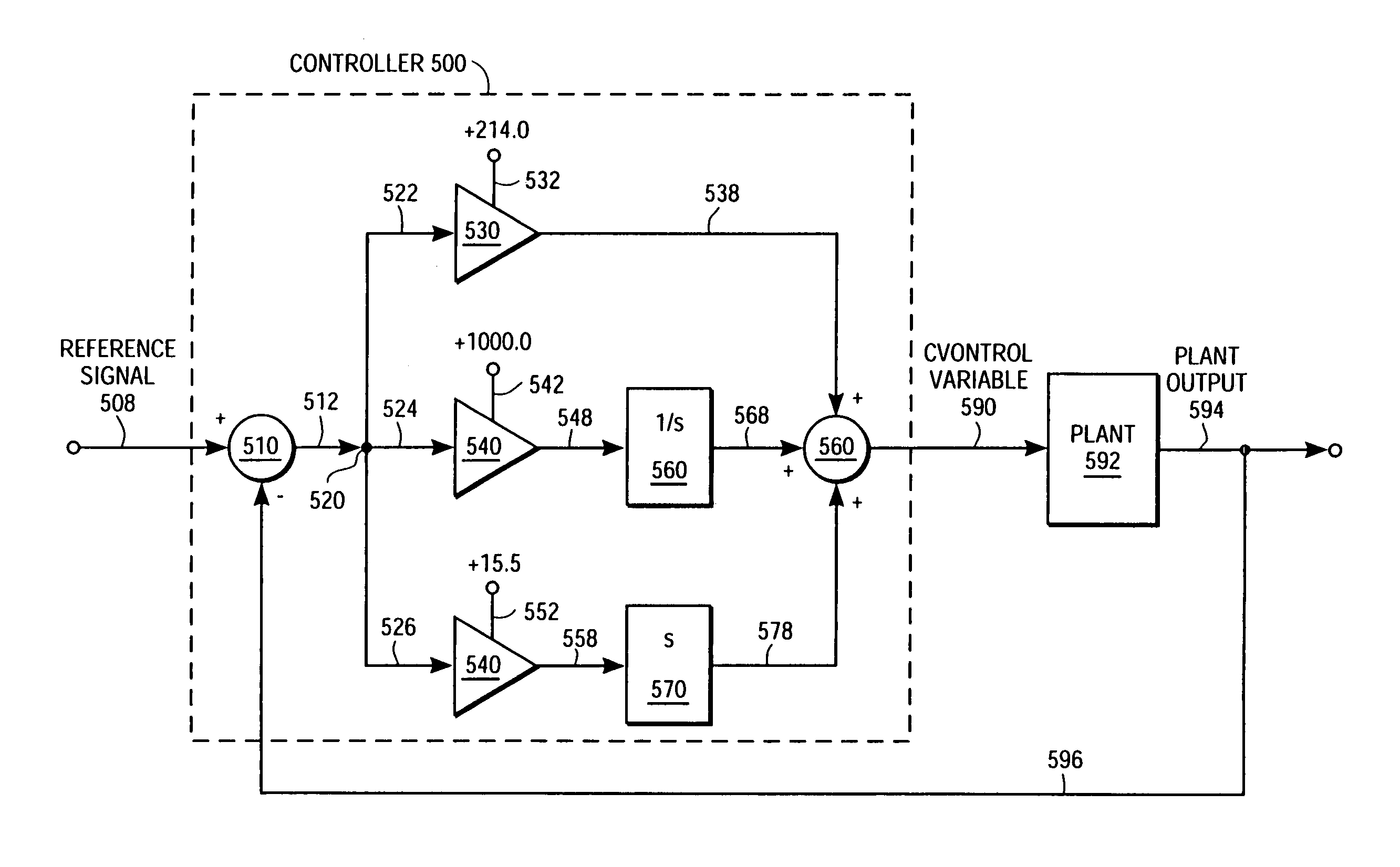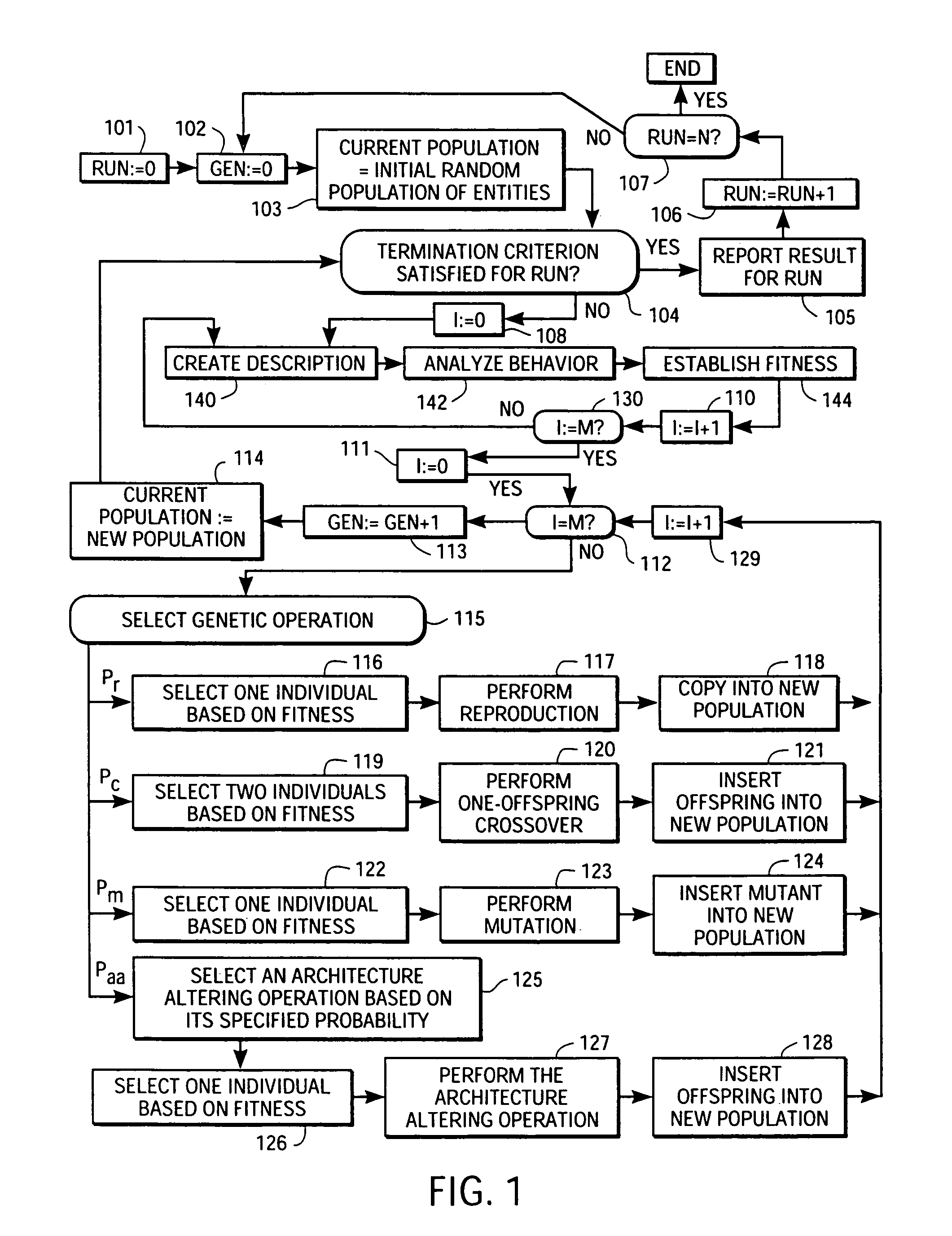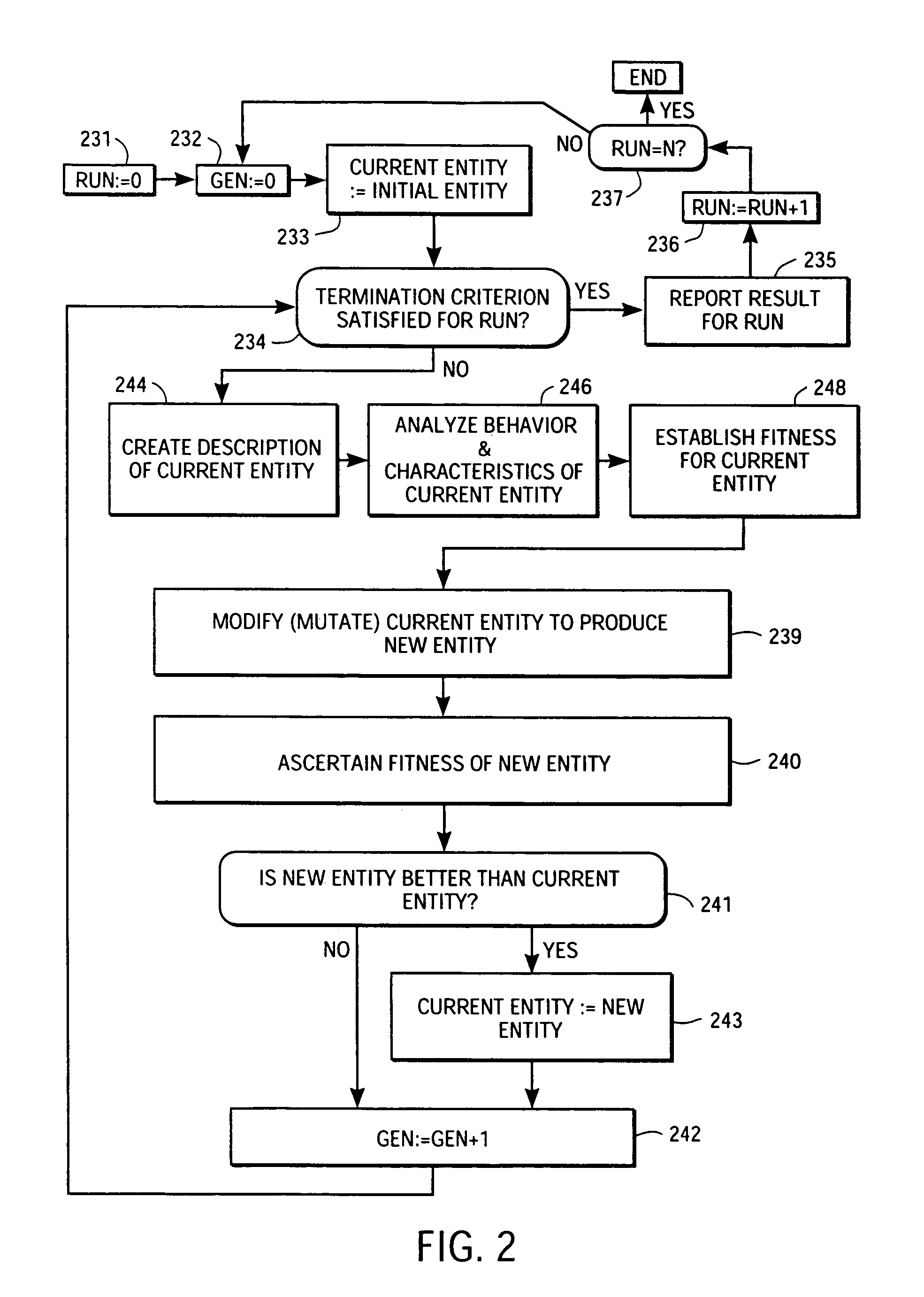Method and apparatus for automatic synthesis of controllers
a controller and automatic synthesis technology, applied in the direction of adaptive control, electric controllers, instruments, etc., can solve the problems of search techniques not finding solutions, plant to reach a desired state generally has a different cost in terms of energy cost, and design for a complex structur
- Summary
- Abstract
- Description
- Claims
- Application Information
AI Technical Summary
Benefits of technology
Problems solved by technology
Method used
Image
Examples
second embodiment
[0143]In a second embodiment, the fitness measure may be determined by a combination of the following elements: (1) five time-domain-based elements based on a modified integral of time-weighted absolute error (ITAE) measuring the achievement of the desired value of the plant response and the controller's avoidance of overshoot, and (2) one time-domain-based element measuring disturbance rejection. In alternate embodiments, any combination of the above elements, or any other applicable elements not listed, may be used to determine the controller's fitness.
[0144]After ascertaining the fitness of an individual entity in the population, processing logic increments the variable i (flowchart box 110) and tests whether the value of variable i is equal to the size, M, of the population (flowchart box 130). If the value of variable i is not equal to the population size, M, then processing transitions to flowchart box 140. If the value of variable i is equal to the population size, M, then th...
first embodiment
[0257]In a first embodiment, an arithmetic-performing subtree composed of arithmetic functions and constant numerical terminals establishes the numerical parameter value(s) of a signal processing block function. In this embodiment, the arithmetic-performing subtree(s) contains a composition of arithmetic functions (such as addition and subtraction) and constant numerical terminals. The functions in arithmetic-performing subtrees are executed in depth-first order (in accordance with the order of evaluation used in programming languages such as LISP). After the arithmetic-performing subtree is executed, it returns a floating-point value. That value becomes the parameter value for its signal processing function block.
[0258]In this first embodiment, the function set, Faps, for each arithmetic-performing subtree consists of arithmetic functions, such as addition and subtraction. That is,
Faps={ADD—NUMERIC, SUB—NUMERIC}.
[0259]In one embodiment, a logarithmic scale (described below) is used...
third embodiment
[0264]In this third embodiment, automatically defined functions, such as ADF0, and their dummy variables (formal parameters), such as ARG0, may be included in the function set for arithmetic-performing subtrees. Further in this embodiment, global variables may be included in the terminal set for arithmetic-performing subtrees.
[0265]In a fourth embodiment, a constrained syntactic structure is not employed as in the first three embodiments. In this fourth embodiment, each numerical parameter for a signal processing block is a time-domain signal that may vary when the controller is operating. Terminals representing constant-valued time-domain signals are used in this embodiment. These terminals are analogs in the time domain of the constant numerical values used in the first embodiment. Individually, these constant-valued time-domain signals do not vary during the run of the search technique or during the time when the controller is operating. However, these constant-valued time-domain...
PUM
 Login to View More
Login to View More Abstract
Description
Claims
Application Information
 Login to View More
Login to View More - R&D
- Intellectual Property
- Life Sciences
- Materials
- Tech Scout
- Unparalleled Data Quality
- Higher Quality Content
- 60% Fewer Hallucinations
Browse by: Latest US Patents, China's latest patents, Technical Efficacy Thesaurus, Application Domain, Technology Topic, Popular Technical Reports.
© 2025 PatSnap. All rights reserved.Legal|Privacy policy|Modern Slavery Act Transparency Statement|Sitemap|About US| Contact US: help@patsnap.com



